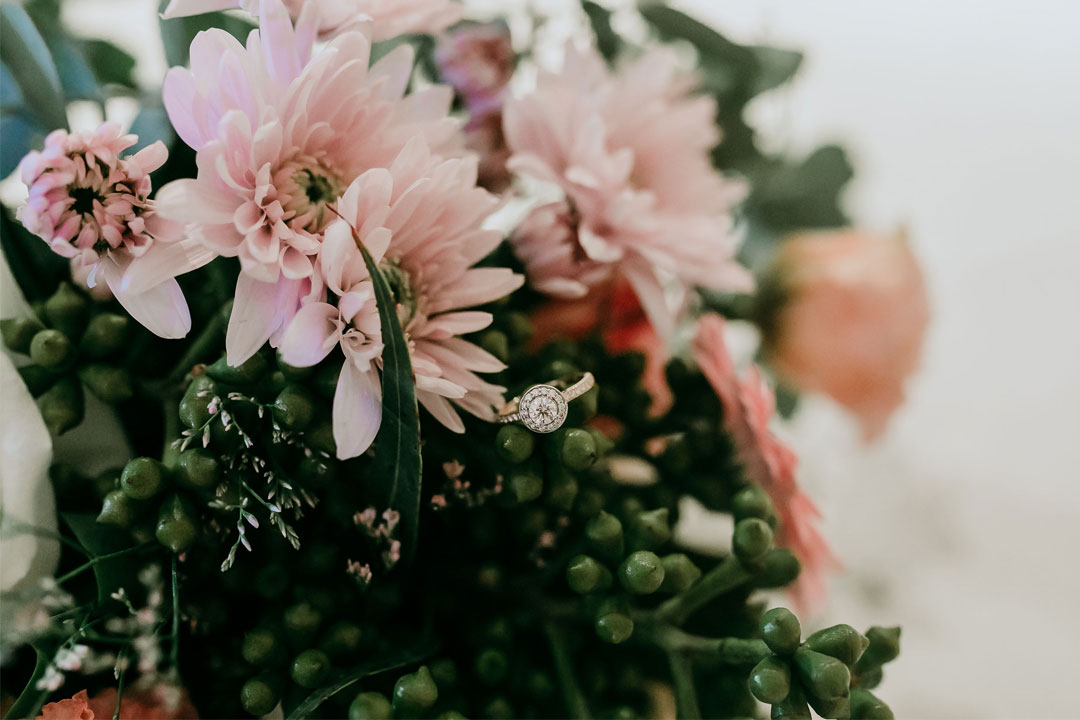Coming Up
Roses
As with most design-driven practices, floral arrangements are often influenced by trends. Pamela Hale discovers that for Lynda Print, the florist and flower stylist at Flowers by Lynda, trends will inevitably come and go, and are to be avoided when seeking truly striking results. When it comes to designing floral arrangements, Print advises the emphasis should always be placed on style.





Here, Queensland Wedding & Bride investigates the types of florals that are consistently appearing throughout weddings, and the visual impact they can render on your special day, not to mention in the memories and photographs that will last for years to come.
Think Themes
When planning your wedding, selecting a central theme will often provide an ideal starting point. It can illuminate every decision from the colour palette you choose, to the style of dress you wear, and, of course the type of florals you incorporate. “The one thing to consider when choosing a theme, is to find something you love,” Print advises. She also suggests that when designing floral arrangements, focusing on colour and texture is an excellent place to start, and will ensure an understated yet harmonious synergy within the overarching theme of your wedding.
Painted and Preserved
If your wedding is to be an utterly contemporary affair, which takes its inspiration from the current styles that are popping up on your Instagram and Pinterest feeds, then you’ll likely be drawn towards natural looking arrangements with plenty of foliage. “Floral trends are leaning towards dried flowers and greenery, with natural elements included in pots styled throughout the event,” Print says.
Natural elements is the term that has historically been used to describe dried flowers, but don’t be concerned if this request doesn’t garner the results you’re seeking. “Now, they are referred to as preserved, dead or natural,” Print says. Often this type of plant matter will be intertwined with fresh florals to ensure the resultant arrangement is not only dynamic but also vibrant.
Initially popular in the 80s, hand-painted and -dyed elements are also making a comeback. “However, it’s a lot bolder now,” Print says. Because bold colours and unique details are becoming so ubiquitous within the fashion selections of bridal parties, incorporating these stylistic elements into other aspects of wedding styling is a logical progression. If you’re interested in incorporating pops of bold colour throughout your bridal bouquet, Print says eclecticism is the name of the game. “Gone are the days where everything matches,” she quips.
Tricks of the Trade
“Each florist has their own distinct style,” Print explains. For this reason, when selecting a florist to work with, it’s important that you appreciate the unique character of their designs as this is likely to influence the resultant aesthetic, regardless of the brief or theme you have outlined.
The uniqueness that a floral stylist can bring to your wedding can really help to elevate your event’s design, and ensure your special day stands out from the crowd for all the right reasons. When an outstanding florist creates an appealing arrangement, this can often trigger the beginnings of a trend; for instance, the flower walls that have become so ubiquitous would have been sparked by one spectacular feature. Print advises that the best trend is to actively avoid whatever style is trending. “Ideally, your floral arrangements should be unique compared to what’s on trend … always look for ideas that bend tradition.”
Likewise, selecting a talented florist will ensure the designs – whether it be your bridal bouquet, reception centrepieces or perhaps a floral arbour – will suit your event and your personal preferences. Print highlights carefully crafted, asymmetrical bouquets as an ideal way to add a unique and trendy twist to your florals without becoming too prescriptive. These designs are more likely to have some movement to them, and provide added definition.
Regardless of the design, your bouquet is an important aspect of the way you present yourself on the day. “An artistic approach that bends tradition will look stunning, but your bouquet is also a photography prop so it’s important that it works well with your dress,” Print says. “I always ask to see the dress before designing a bouquet; there’s nothing worse than seeing a beautiful gown being drowned by greenery.”
Flowers on Everything
Just as the design of your bouquet ought to be constructed to fit cohesively with your dress, the floral arrangements used throughout your venue will need to take into consideration both the aesthetic of the locale and the seasonal conditions.
While these factors may influence your selections, and the way you choose to style your event, they needn’t be limiting. “My motto is ‘flowers on everything!’” Print says. With careful consideration and planning, floral additions can enhance almost any design aspect.
Likewise, while your floral selection may be influenced by seasonal availability, with the right planning, there’s no reason to avoid your dream designs because of weather. “There are some flowers and greenery that have to be handled differently depending on weather conditions,” Print says. “For example, in summer, you may need a water source of some kind, so you don’t end up with crisp or droopy florals.”
Flowers are an incredibly important aspect of wedding styling, and from the bouquet you carried down the aisle to the fragrance of your blooms, which will likely induce memories of your special day for years to come, choosing a style that truly resonates with you and reflects your relationship will always be on trend.


